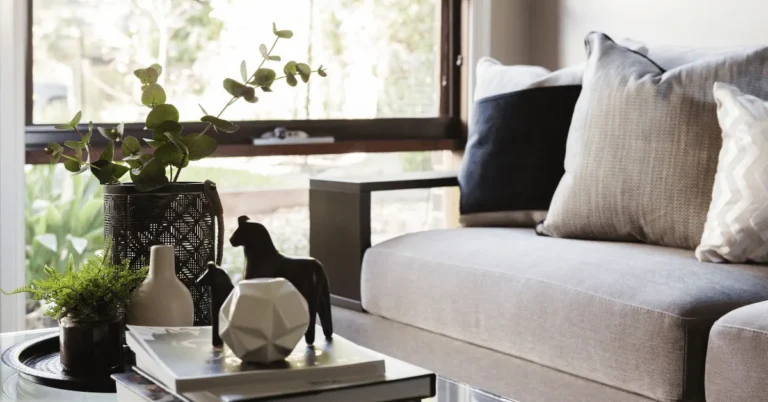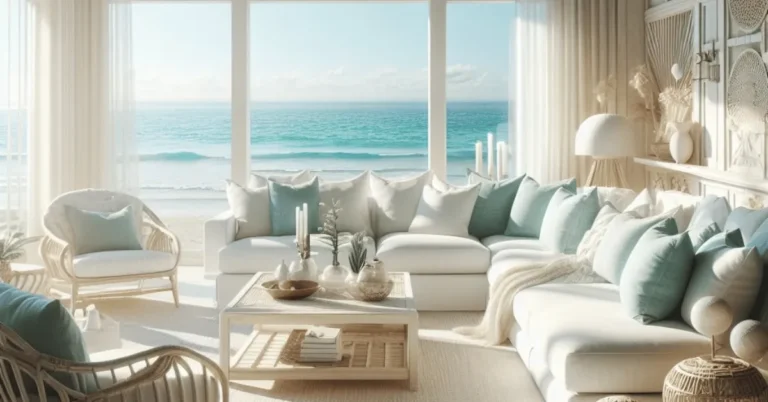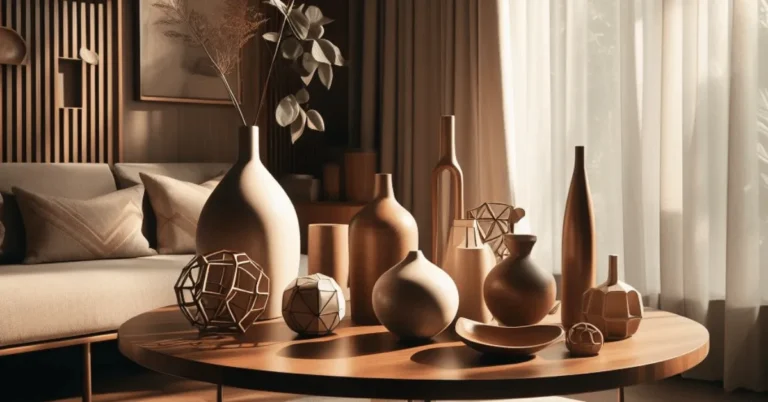Home Decor Rules: Follow Them To Get Better Results
When it comes to decorating your home, there are certain home decor rules that can help you create a stylish and cozy space.
These home decor rules serve as guidelines to ensure that your interior design choices are well-balanced and visually appealing.
By following these rules, you can transform your living space into a place that reflects your personal style and enhances your overall well-being.
Let’s learn what the basic rules for home decoration are.
Table of contents
- What Are the Basic Rules for Home Decoration?
- Why is Space Important in Home Decoration?
- How to Choose a Statement Piece for Your Room?
- How Can You Create an Illusion of Height in Your Room?
- What is the Importance of Layering in Home Decoration?
- How to Choose and Hang Artwork Correctly in Your Home?
- What Role Do Mirrors Play in Home Decoration?
- How to Get the Lighting Right in Your Home?
- Why is Dressing Your Windows Important in Home Decoration?
- What Mistakes Should You Avoid in Home Decoration?
- FAQs
- Final Thoughts
What Are the Basic Rules for Home Decoration?
When it comes to decorating your home, it’s important to follow some basic rules to create a harmonious and aesthetically pleasing space.
Whether you’re a seasoned decorator or a beginner, these rules will help you transform your home into a beautiful sanctuary. Here are 13 basic rules for home decoration:
13 Basic Home Decor Rules
Define your style: Before you start decorating, it’s important to define your personal style. Are you more traditional, modern, or eclectic? Knowing your style will help guide your design decisions.
Plan your layout: Consider the flow of your space and plan your layout accordingly. Position your furniture to encourage effortless circulation and engaging conversations.
Choose a color scheme: Select a color scheme that reflects your style and creates a cohesive look throughout your home. Consider using a neutral base with pops of color for a balanced and inviting space.
Balance your furniture: When arranging furniture, aim for balance. Avoid overcrowding one area and leaving another empty. Distribute furniture evenly throughout the space.
Consider scale and proportion: Pay attention to the scale and proportion of your furniture and decor. Combine larger elements with smaller ones to craft a visually captivating display.
Focus on lighting: Lighting is crucial in home decoration. Use a combination of ambient, task, and accent lighting to create a warm and inviting atmosphere.
Accessorize thoughtfully: Choose accessories that complement your style and add personality to your space. Don’t overdo it – less is often more.
Add texture: Incorporate different textures to add depth and visual interest to your home. Mix materials like wood, metal, and fabric for a layered look.
Hang artwork at eye level: When hanging artwork, aim for eye level. This will ensure that it is easily visible and creates a focal point in the room.
Keep it organized: A clutter-free space is essential for good home decoration. Invest in storage solutions and keep surfaces clear of unnecessary items.
Consider functionality: While aesthetics hold significance, remember not to overlook functionality. Choose furniture and decor that serve a purpose and make your daily life easier.
Pay attention to details: Small details can make a big difference in home decoration. Pay attention to things like hardware, trim, and finishes to create a polished look.
Don’t be afraid to experiment: Home decoration is a creative process, so don’t be afraid to experiment and try new things. Have confidence in your instincts and enjoy the process!

Why is Space Important in Home Decoration?
When it comes to home decoration, many people focus on choosing the right colors, furniture, and accessories.
While these elements are undoubtedly important, one aspect that is often overlooked is the importance of space. In fact, space plays a crucial role in creating a harmonious and visually appealing environment in your home.
Creating a Sense of Balance
One of the main reasons why space is important in home decoration is that it helps create a sense of balance. A well-balanced room feels comfortable and inviting, while an overcrowded or cluttered space can feel chaotic and overwhelming.
By allowing enough space between furniture pieces and accessories, you can achieve a harmonious balance that promotes relaxation and tranquility.

Enhancing Functionality
Space is not just about aesthetics; it also plays a crucial role in enhancing the functionality of a room. Whether you have a small apartment or a spacious house, utilizing space effectively can make a significant difference in how you use and enjoy your living areas.
By carefully considering the layout and arrangement of furniture, you can optimize the flow of movement and create functional zones within a room.

Creating Visual Interest
Another reason why space is important in home decoration is that it allows for the creation of visual interest. By leaving empty spaces or incorporating negative space into your design, you can draw attention to specific elements or focal points in a room.
This can be achieved through the use of open shelving, wall art, or even by simply leaving some areas free from clutter. The strategic use of space can add depth and dimension to your home decor, making it more visually appealing.
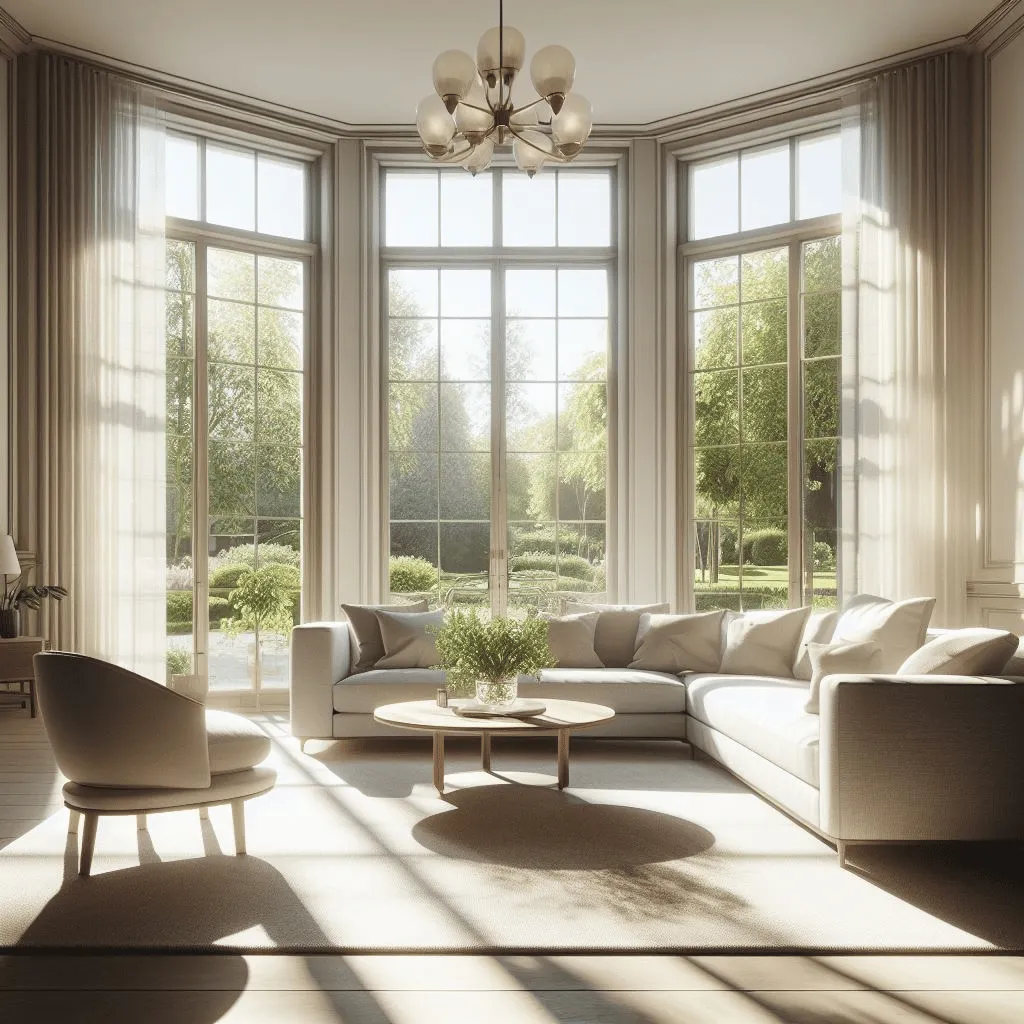
Providing a Sense of Calm
In today’s fast-paced world, it is essential to create a home environment that provides a sense of calm and relaxation. Space is integral to attaining this goal.
A clutter-free and well-organized space can help reduce stress and promote a peaceful atmosphere. By allowing for adequate space between furniture and keeping surfaces clear, you can create a serene and tranquil ambiance that allows you to unwind and recharge.
As you can see, space is an essential element in home decoration. It not only contributes to the overall aesthetics of a room but also enhances functionality and creates a sense of balance.
By understanding the importance of space and incorporating it into your design, you can transform your home into a harmonious and visually appealing sanctuary.
So, the next time you embark on a home decoration project, don’t forget to give space the attention it deserves.
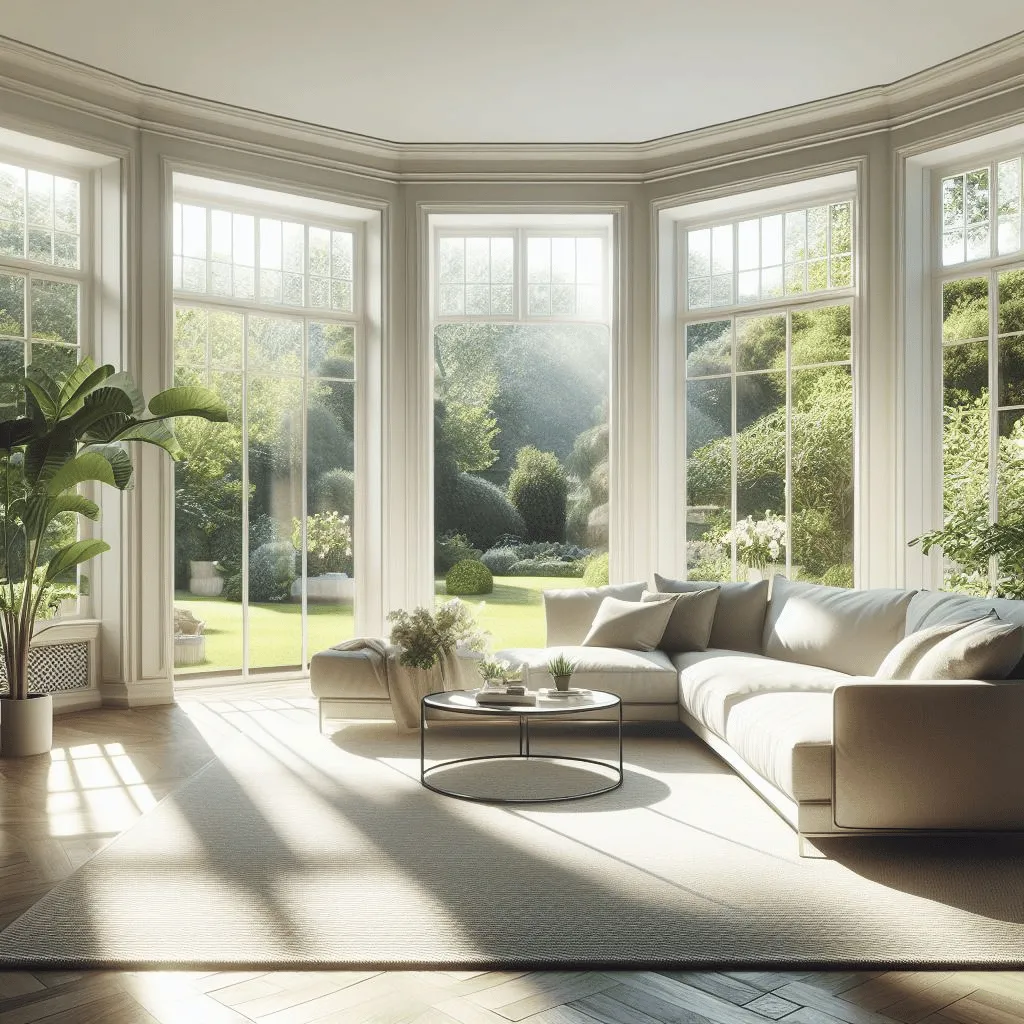
How to Choose a Statement Piece for Your Room?
When it comes to designing a room, one of the most important elements is choosing a statement piece. A statement piece is a bold and eye-catching item that immediately draws attention and sets the tone for the entire space.
Whether it’s a striking piece of artwork, a unique piece of furniture, or an accent wall, a statement piece can elevate the style and personality of your room.
Consider the Size and Scale
Before selecting a statement piece, it’s crucial to consider the size and scale of your room. A large room can handle a bigger and more dramatic statement piece, while a smaller room may require something more subtle.
Take measurements and visualize how the piece will fit into the space to ensure it doesn’t overwhelm or get lost in the room.
Choose a Piece that Reflects Your Style
Your statement piece should be a reflection of your personal style and taste. It should be something that you love and that speaks to you.
Whether you prefer modern and sleek or eclectic and bohemian, there is a statement piece out there that will align with your aesthetic.
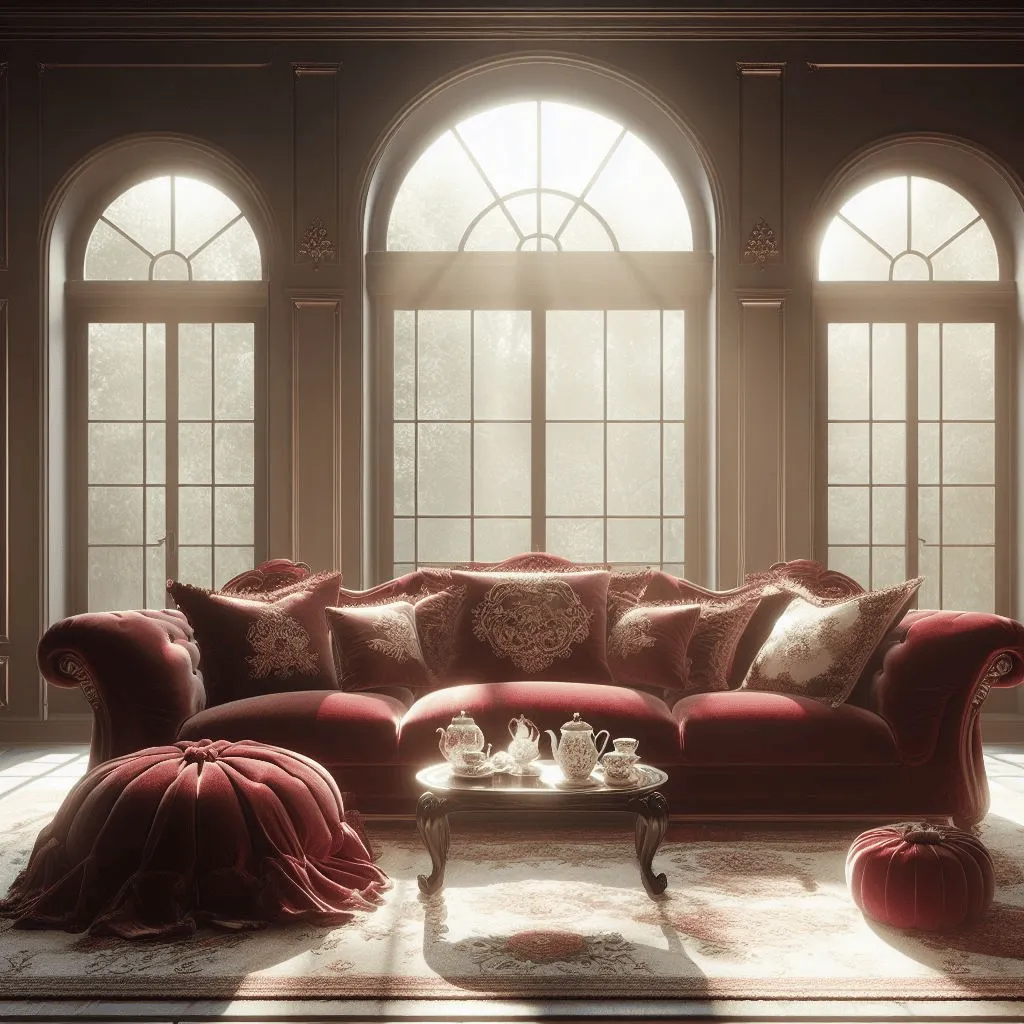
Consider the Functionality
While a statement piece is meant to be visually striking, it’s also important to consider its functionality. Will it serve a purpose beyond just being a decorative item?
For example, a statement chair can provide both style and comfort, while a statement light fixture can illuminate the room and create a focal point.
Don’t Be Afraid to Take Risks
Choosing a statement piece is an opportunity to step outside of your comfort zone and take risks. Don’t be afraid to go for something unexpected or unconventional. It’s these bold choices that can make your room truly unique and memorable.
By following these tips, you can confidently choose a statement piece that will transform your room into a stylish and inviting space.
Remember, the key is to select a piece that makes a bold statement while still reflecting your personal style and enhancing the overall functionality of the room.
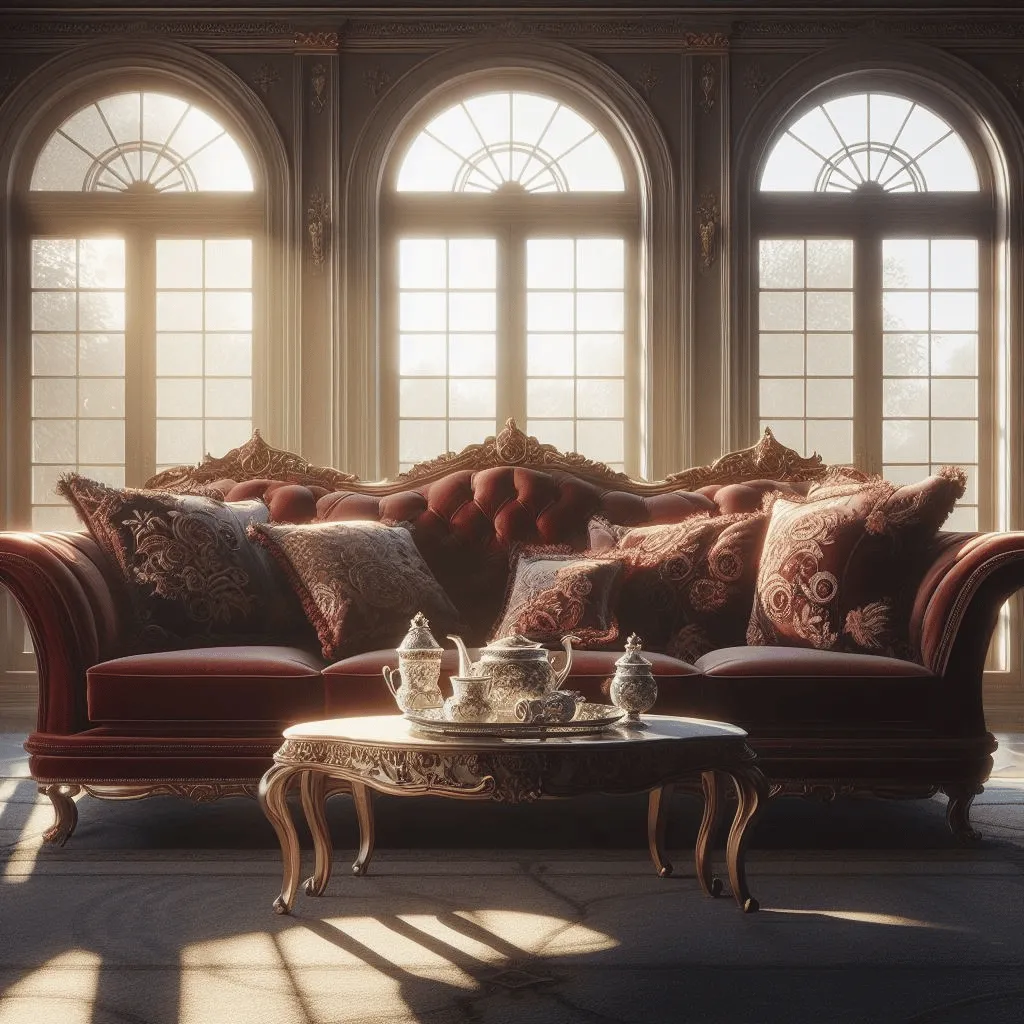
How Can You Create an Illusion of Height in Your Room?
When it comes to interior design, creating the illusion of height in a room can make a significant difference. Whether you have low ceilings or simply want to enhance the spaciousness of a room, there are several tricks you can use to make your room appear taller.
One effective way to create the illusion of height is by using vertical lines. Incorporate vertical elements such as tall bookshelves, floor-to-ceiling curtains, or striped wallpaper to draw the eye upwards. These vertical lines will give the impression of a taller space.
Another technique is to use mirrors strategically. Placing a large mirror on one wall can reflect light and create the illusion of depth, making the room appear taller. Additionally, using mirrors on opposite walls can create the perception of a larger space.
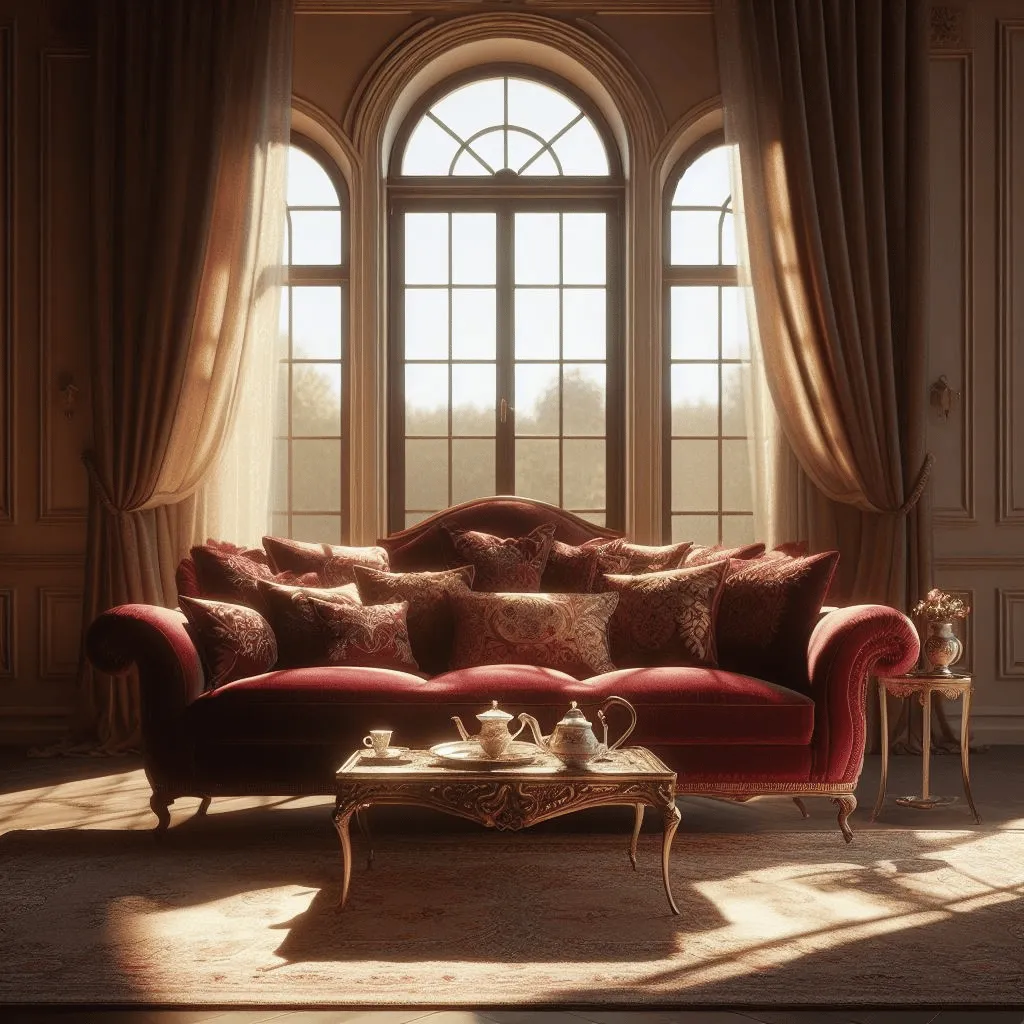
Choosing the right colors can also play a role in creating the illusion of height. Lighter colors, such as whites and pastels, tend to make a room feel more open and airy. Painting the ceiling a lighter shade than the walls can also give the impression of a higher ceiling.
Furthermore, decluttering your space can contribute to the illusion of height. Removing unnecessary furniture and keeping the room tidy can make it feel more spacious and, consequently, taller.
Lastly, incorporating vertical artwork or tall plants can add visual interest and draw the eye upwards, creating the illusion of height.
What is the Importance of Layering in Home Decoration?
Layering is an essential technique in home decoration that adds depth, texture, and visual interest to a space. It involves combining different elements such as colors, patterns, textures, and materials to create a cohesive and visually appealing look.
One of the key benefits of layering in home decoration is that it helps to create a sense of warmth and coziness in a room.
By layering different fabrics such as throw pillows, blankets, and rugs, you can instantly make a space feel more inviting and comfortable.
Layering also allows you to add personality and style to your home. By mixing and matching different patterns and textures, you can create a unique and personalized look that reflects your taste and preferences.
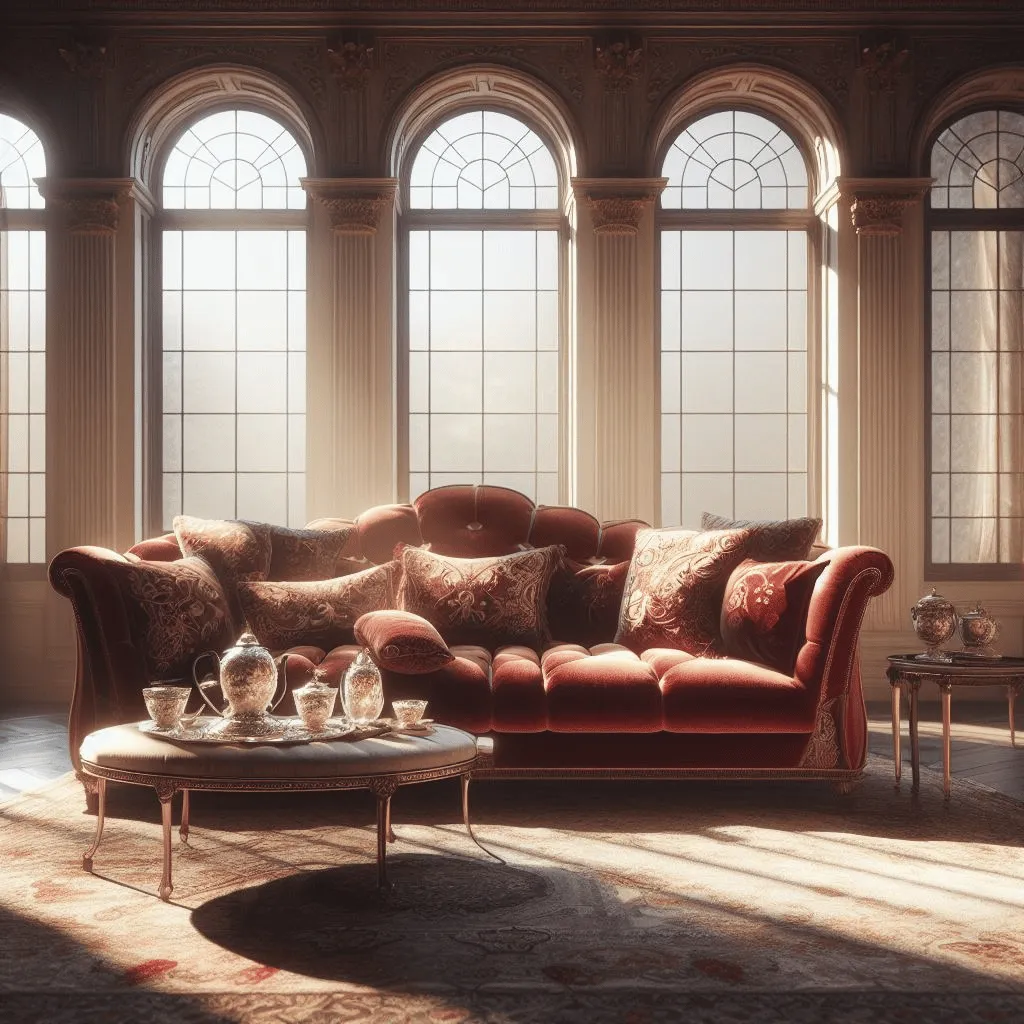
Whether you prefer a more eclectic or minimalist style, layering allows you to express your individuality and create a space that feels like home.
Another important aspect of layering in home decoration is its ability to add visual interest and dimension to a room.
By layering different elements such as artwork, mirrors, and decorative objects, you can create a focal point and draw attention to specific areas of the room.
This not only enhances the overall aesthetic appeal of the space but also creates a sense of balance and harmony.
How to Choose and Hang Artwork Correctly in Your Home?
Artwork has the power to transform the look and feel of your home. Whether you’re a seasoned art collector or just starting to build your collection, it’s important to choose and hang artwork correctly to enhance the beauty and ambiance of your space.
Here are some tips to help you make the right choices:
Consider the style and theme of your home: The artwork you choose should complement the overall style and theme of your home.
If you have a modern and minimalist space, opt for contemporary and abstract pieces. For a traditional or vintage-inspired home, choose classic or antique artwork.
Think about the size and scale: The size of the artwork should be proportionate to the wall or space where you plan to hang it.
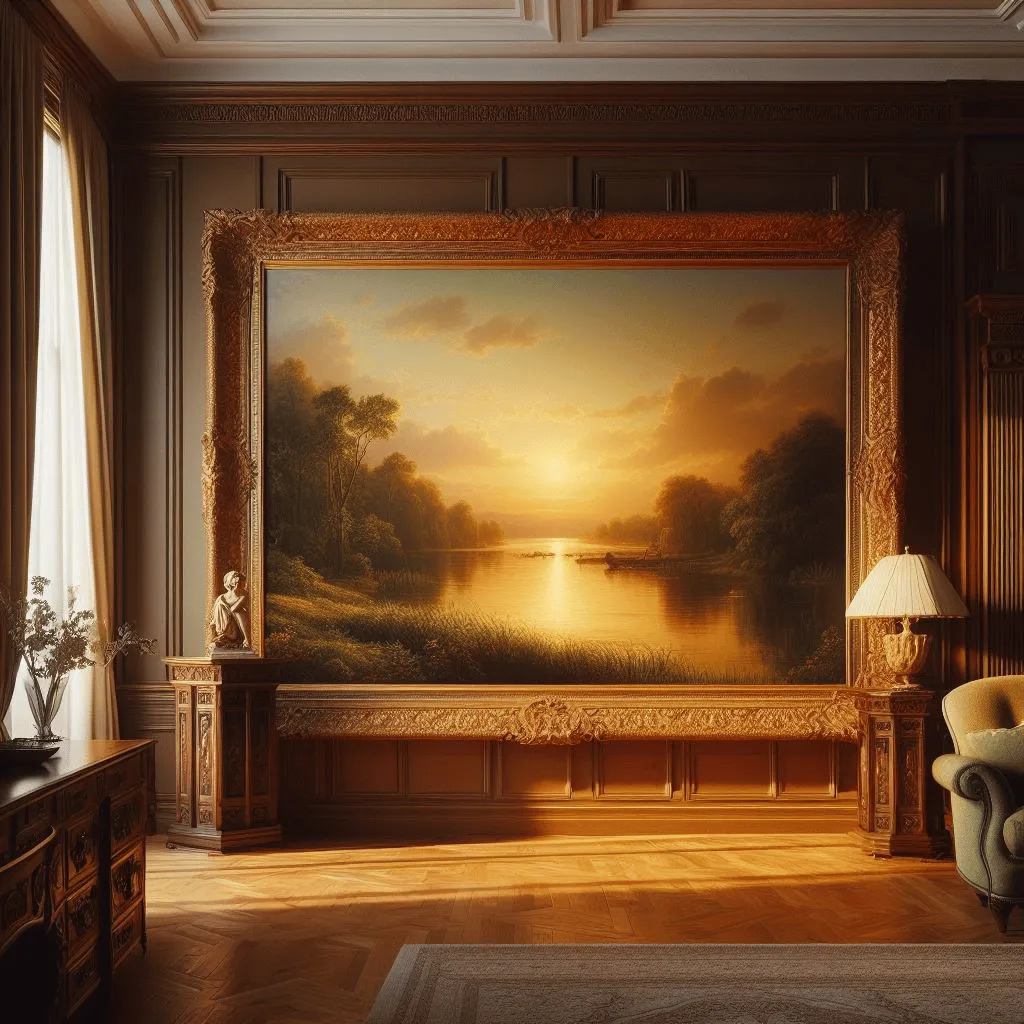
A small artwork might seem insignificant on a spacious wall, whereas an oversized piece could dominate a compact room. Measure the wall and consider the furniture placement before making a decision.
Reflect your personality and interests: Your home should be a reflection of your personality and interests. Choose artwork that speaks to you and evokes emotions.
Whether it’s a landscape painting, a vibrant abstract piece, or a black and white photograph, make sure it resonates with you.
Hanging Artwork Like a Pro
Once you’ve chosen the perfect artwork for your home, it’s time to hang it correctly. Follow these steps for a professional and polished look:
- Find the right height: The center of the artwork should be at eye level. This is typically around 57-60 inches from the floor. If you’re hanging multiple pieces together, treat them as one unit and create a cohesive arrangement.
- Use the right tools and techniques: Invest in quality picture hooks, nails, and a level. Use a pencil to mark the spot where the hook should go. If you’re hanging heavy artwork, consider using wall anchors or consult a professional to ensure it’s securely mounted.
- Create balance and symmetry: If you’re hanging multiple pieces, create balance and symmetry by spacing them evenly. You can also experiment with different arrangements, such as a gallery wall or a grid pattern.
By following these tips, you can choose and hang artwork correctly in your home, creating a visually stunning and personalized space that reflects your style and taste.

What Role Do Mirrors Play in Home Decoration?
When it comes to home decoration, mirrors are often overlooked. However, these versatile pieces can have a significant impact on the overall look and feel of a space.
Whether you have a small apartment or a spacious house, mirrors can be used strategically to enhance the aesthetic appeal of your home.
One of the main roles that mirrors play in home decoration is creating an illusion of space. By reflecting light and bouncing it off the walls, mirrors can make a room appear larger and more open. This is particularly advantageous for compact rooms or spaces with restricted natural light.
In addition to creating the illusion of space, mirrors can also be used to highlight certain features or focal points in a room. Placing a mirror above a fireplace or behind a dining table can draw attention to these areas and make them the centerpiece of the room.
Furthermore, mirrors can be used to enhance the lighting in a space. By strategically placing mirrors opposite windows or light sources, you can maximize the amount of natural light that enters the room.

This not only makes the space brighter but also creates a warm and inviting atmosphere.
Another role that mirrors play in home decoration is adding depth and dimension to a room. By reflecting other objects and furniture, mirrors can create a sense of depth and make the space feel more dynamic.
This is particularly useful in rooms with minimal furniture or in areas that lack architectural features.
Lastly, mirrors can be used as decorative elements in their own right. With a wide variety of shapes, sizes, and frames available, mirrors can be used to add style and personality to any room.
From sleek and modern designs to ornate and vintage frames, mirrors can complement any interior design theme.
How to Get the Lighting Right in Your Home?
Lighting plays a crucial role in enhancing the ambiance and functionality of your home. Whether you are looking to create a cozy atmosphere or brighten up a space, getting the lighting right is essential.
Here are some tips to help you achieve the perfect lighting in your home:
1. Consider the Purpose of Each Room
Before choosing the lighting fixtures, think about the purpose of each room. For example, in the living room, you may want to have a combination of ambient, task, and accent lighting to accommodate various activities such as watching TV, reading, or entertaining guests.
2. Layer Your Lighting
Layering your lighting involves using different types of lighting fixtures to create depth and dimension in a room. Begin with ambient lighting, such as ceiling fixtures or recessed lights, to establish general illumination.
Next, incorporate task lighting, such as table lamps or under-cabinet lights, to cater to specific activities. Finally, incorporate accent lighting, such as wall sconces or picture lights, to highlight architectural features or artwork.
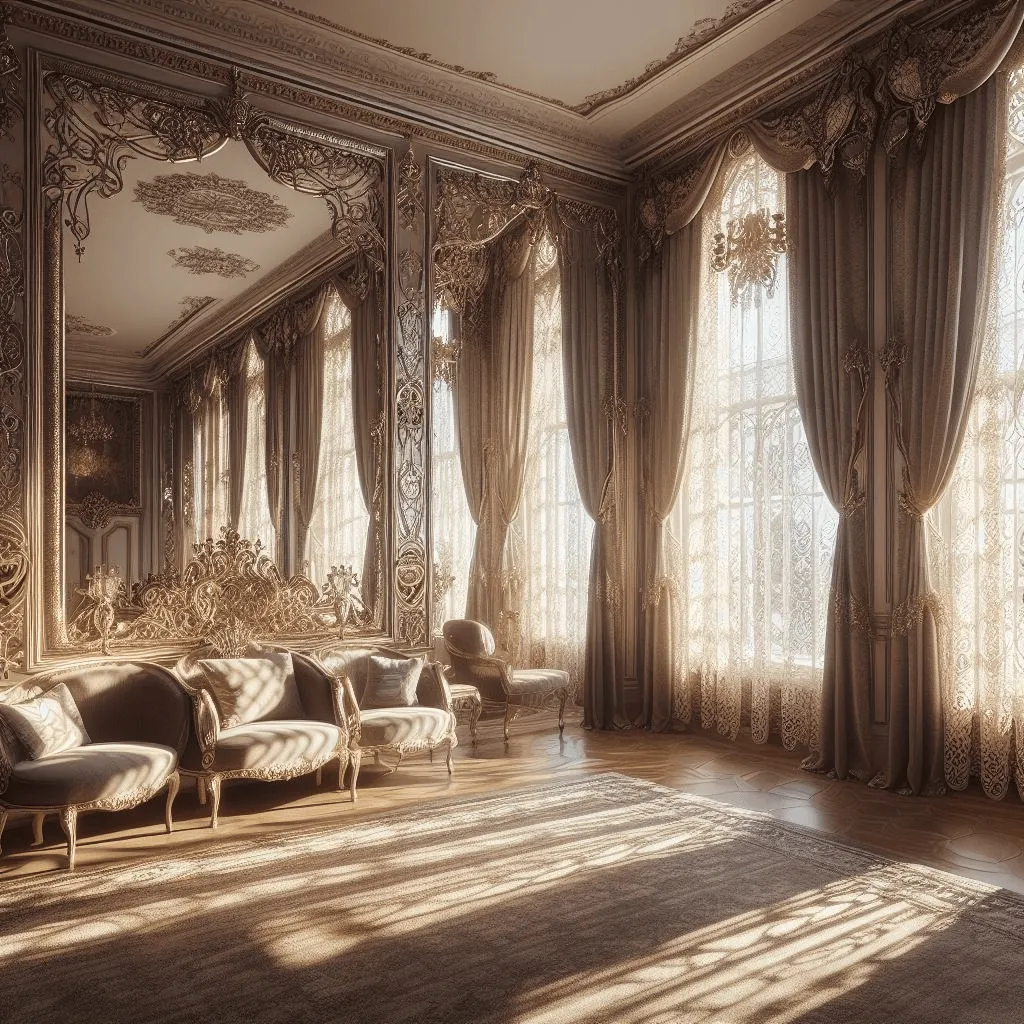
3. Choose the Right Bulbs
When selecting bulbs, consider the color temperature and brightness level. Warm white bulbs (around 2700-3000K) create a cozy and inviting atmosphere, while cool white bulbs (around 4000-5000K) are ideal for task-oriented areas like the kitchen or home office.
Additionally, opt for energy-efficient LED bulbs to save on electricity bills.
4. Control Your Lighting
Installing dimmer switches or smart lighting systems allows you to adjust the intensity and mood of your lighting. This flexibility is especially useful in areas like the dining room or bedroom, where you may want to create a more intimate setting.
By following these tips, you can create the perfect lighting in your home that suits your needs and enhances the overall aesthetic. Remember to experiment and have fun with different lighting options to find the perfect balance for each room.
Why is Dressing Your Windows Important in Home Decoration?
When it comes to home decoration, many people overlook the importance of dressing their windows. However, window dressing plays a crucial role in enhancing the overall aesthetics of your home.
Whether you prefer curtains, blinds, or shades, dressing your windows can transform the look and feel of any room.
One of the main reasons why window dressing is important in home decoration is that it adds a finishing touch to your interior design.
The right window treatments can complement the color scheme, furniture, and decor of your space, tying everything together in a cohesive and visually appealing way.
Window dressing also allows you to control the amount of natural light that enters your home. By choosing the appropriate window coverings, you can create the desired ambiance and atmosphere in each room.

Whether you want to let in plenty of sunlight or create a cozy and intimate setting, window dressing gives you the flexibility to achieve your desired lighting effects.
In addition to aesthetics and lighting, window dressing also provides practical benefits. Insulating your home assists in maintaining warmth during the winter and coolness in the summer.
By choosing energy-efficient window treatments, you can reduce your energy consumption and lower your utility bills.
Furthermore, window dressing offers privacy and security. It prevents outsiders from peering into your home, ensuring that you can enjoy a sense of seclusion and peace of mind. With the right window coverings, you can create a private sanctuary where you can relax and unwind.
What Mistakes Should You Avoid in Home Decoration?
Decorating your home can be an exciting and fulfilling process. However, it’s important to avoid certain mistakes that can hinder the overall aesthetic appeal of your space.
By being aware of these common pitfalls, you can ensure that your home decoration project is a success.
1. Overcrowding
One of the most common mistakes in home decoration is overcrowding the space. Avoid cluttering your rooms with too many furniture pieces or accessories. Instead, opt for a minimalist approach that allows each item to stand out and create a sense of harmony.
2. Ignoring Scale and Proportion
Another mistake to avoid is ignoring the scale and proportion of your furniture and decor. Make sure that each piece fits well within the room and complements the overall design. Oversized or undersized items can throw off the balance and make the space feel awkward.
3. Lack of Lighting
Lighting plays a crucial role in home decoration. Avoid the mistake of relying solely on overhead lighting. Integrate a combination of ambient, task, and accent lighting to craft a cozy and welcoming ambiance.
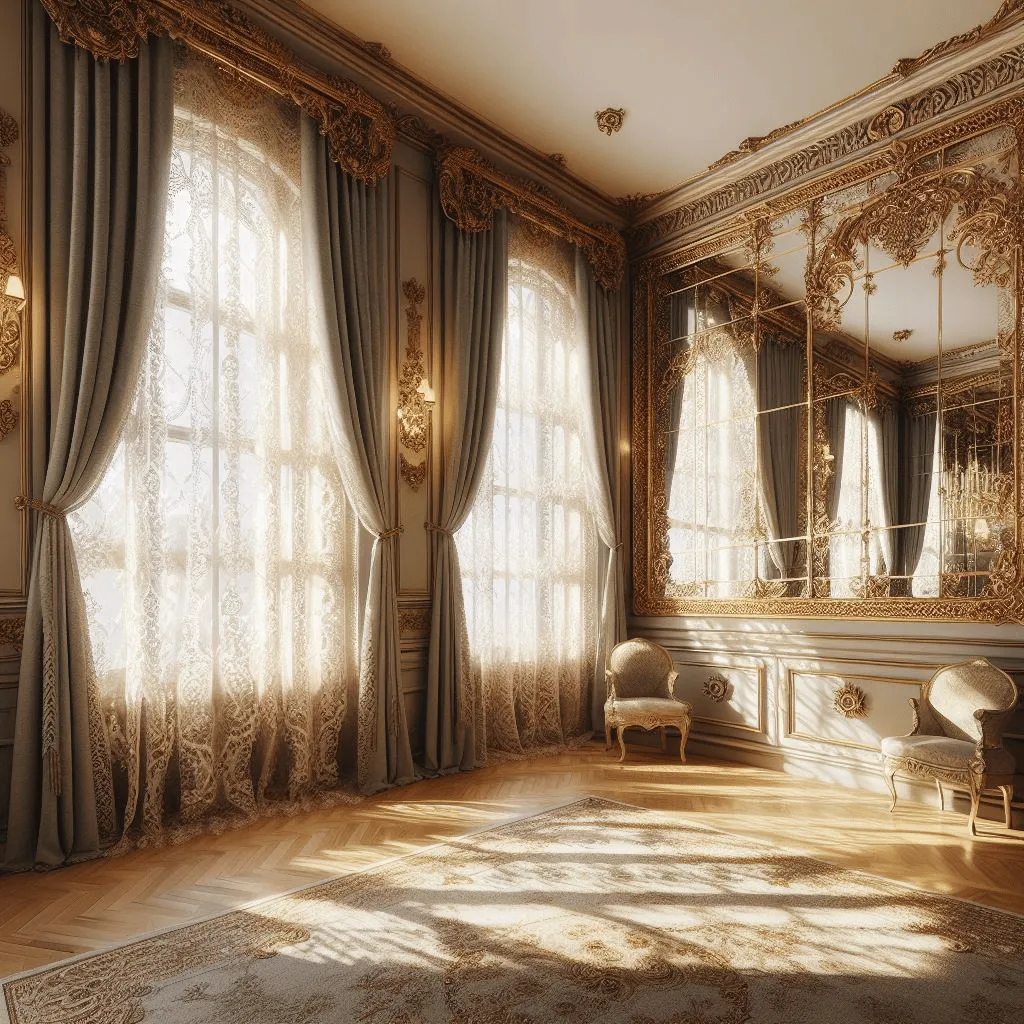
4. Neglecting the Color Palette
Choosing the right color palette is essential for a cohesive and visually appealing home decor. Avoid the mistake of using too many colors or clashing hues. Stick to a consistent color scheme that complements the style and mood of your space.
5. Disregarding Functionality
While aesthetics are important, don’t forget about functionality. Avoid the mistake of prioritizing style over practicality. Ensure that your furniture and decor serve a purpose and enhance the usability of your space.
Avoiding these common mistakes in home decoration can help you create a beautiful and well-designed living environment. Remember to take your time, plan carefully, and seek inspiration to ensure a successful outcome.
FAQs
When it comes to home decor, there are a few basic rules that can help you create a cohesive and stylish space. These include choosing a color palette, considering scale and proportion, and incorporating texture and patterns.
Creating a focal point in a room helps draw attention and adds visual interest. You can achieve this by using a statement piece of furniture, hanging a bold artwork, or creating a gallery wall.
While it’s fun to incorporate current trends, it’s important to remember that they can be short-lived. Instead, focus on timeless pieces and add trendy elements through accessories or smaller decor items.
To make a small space feel larger, use light colors, maximize natural light, and incorporate mirrors to create an illusion of space. Additionally, choosing furniture with legs can give the illusion of openness.
Some common mistakes to avoid in home decor include overcrowding a room with too much furniture, neglecting proper lighting, and not considering the functionality of the space.
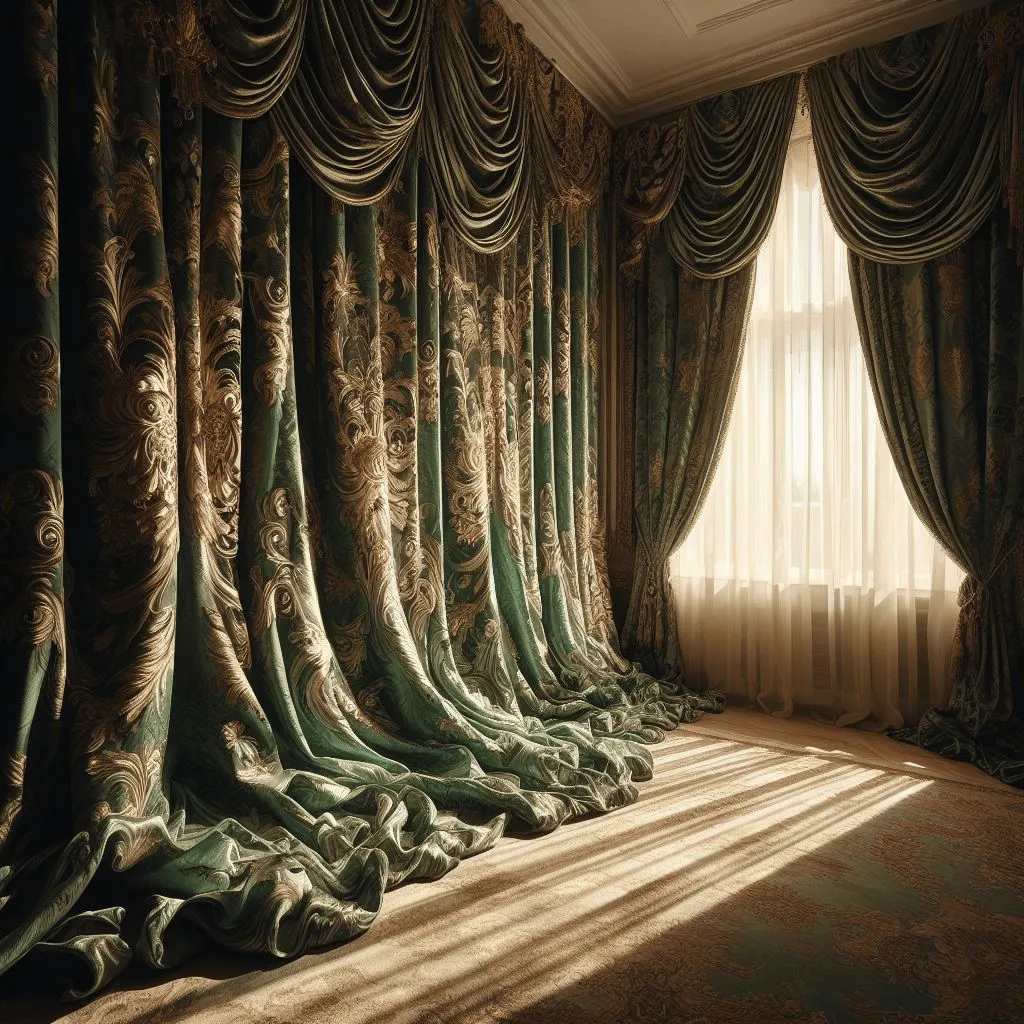
Final Thoughts
By following these home decor rules, you can create a beautiful and well-designed space that reflects your personal style.
Remember to experiment, have fun, and make your home a reflection of your personality and taste.
Read More:

